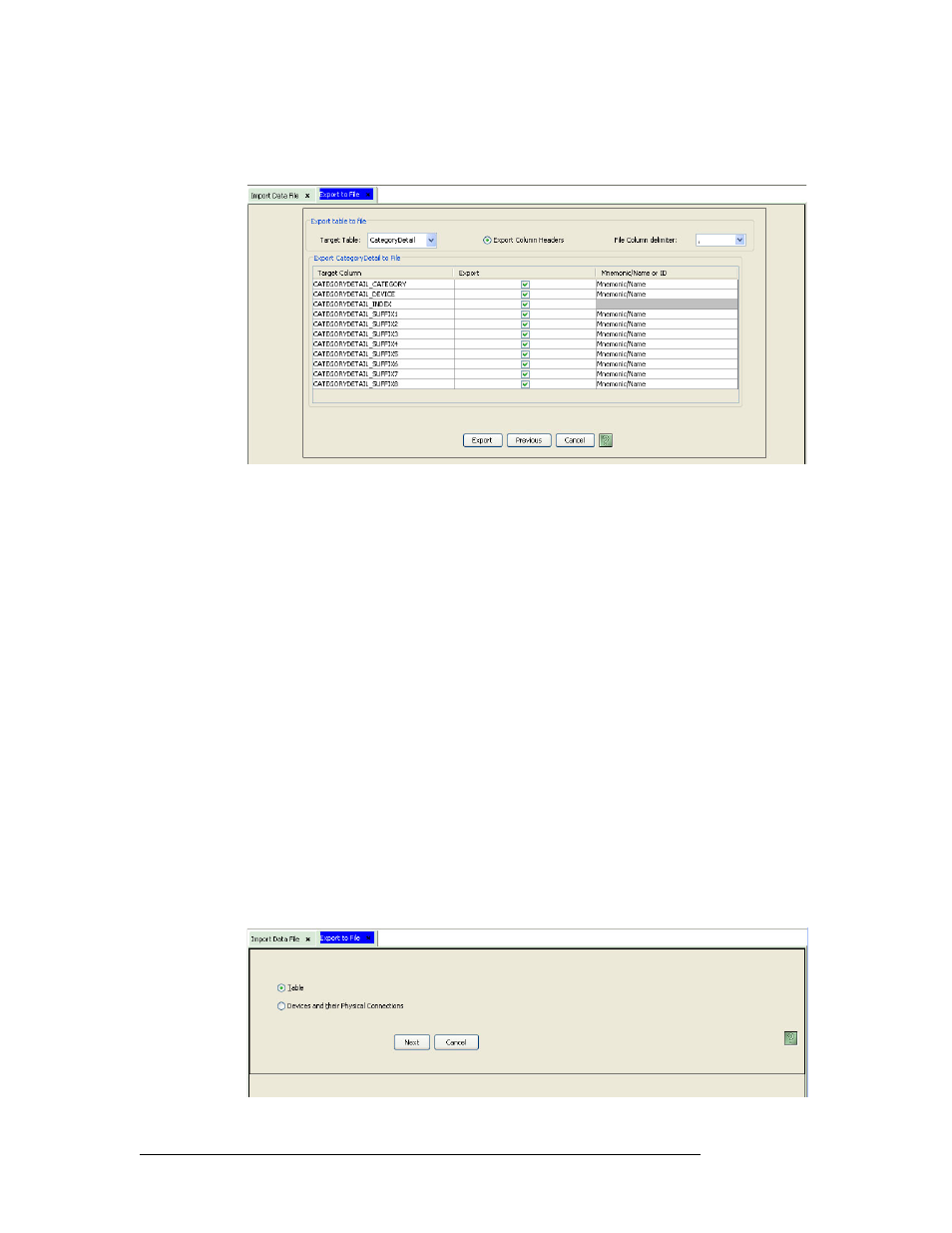How to export devices and physical connection data, Importing and exporting data – Grass Valley NV9000-SE v.3.0 User Manual
Page 78

58
Rev 3.0 • 25 Mar 10
6. Importing and Exporting Data
Exporting Data
4 The ‘Export table to file’ page appears displaying the columns for the selected table, as shown
in Figure 6-7. To pick a different table, select one from the ‘Target Table’ drop-down list.
Figure 6-7. Example of the Export Table to File Page
Each column in the table is listed on a single row. By default, the ‘Export’ check box is
checked. Uncheck the ‘Export’ check box to not import that row’s data. The ‘Mnemonic/Name
or ID’ column displays the name associated with the type of data being imported.
5 Select the ‘Export Column Headers’ to have those exported into the spreadsheet. By default,
this option is selected.
6 From the ‘File Column delimiter’ drop-down list, select a delimiter. When imported, the file is
converted to text and no table cells exist. You can choose to have data that appears in a column
separated from data in other columns by a delimiter: comma (,), tab <tab>, or slash (/). By
default, a comma is selected. When converting the data to a spreadsheet, the delimiter is used to
define columns.
7 Click
Export
. The ‘Save’ dialog box appears. Browse to the location where you want to save the
export data file and enter a ‘File name’ and then click
Save
.
Or
Click
Previous
to return to the previous page without saving the exported data.
Or
Click
Cancel
to cancel without saving changes and close the page.
How to Export Devices and Physical Connection Data
1 Click the ‘Tasks’ pane and select ‘Export to File’. The ‘Export to File’ page appears:
Figure 6-8. Export to File Page